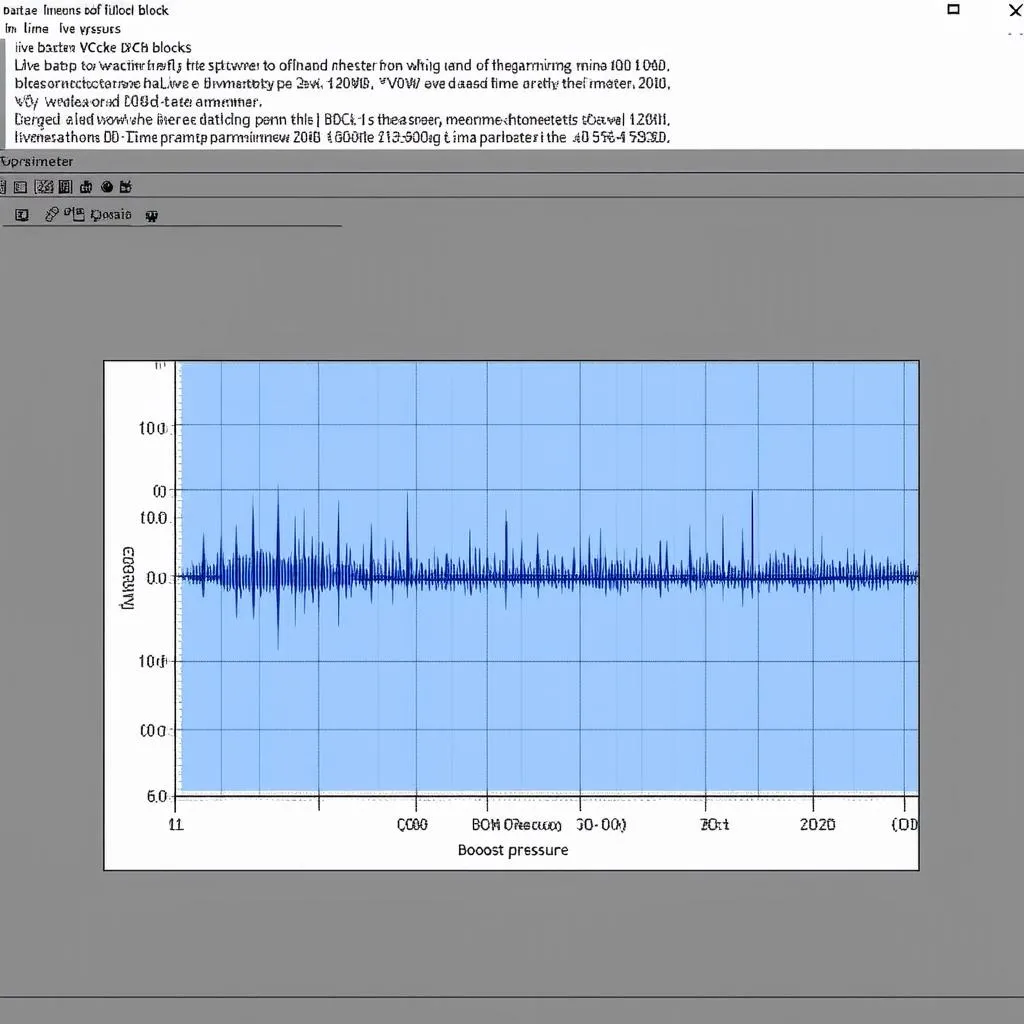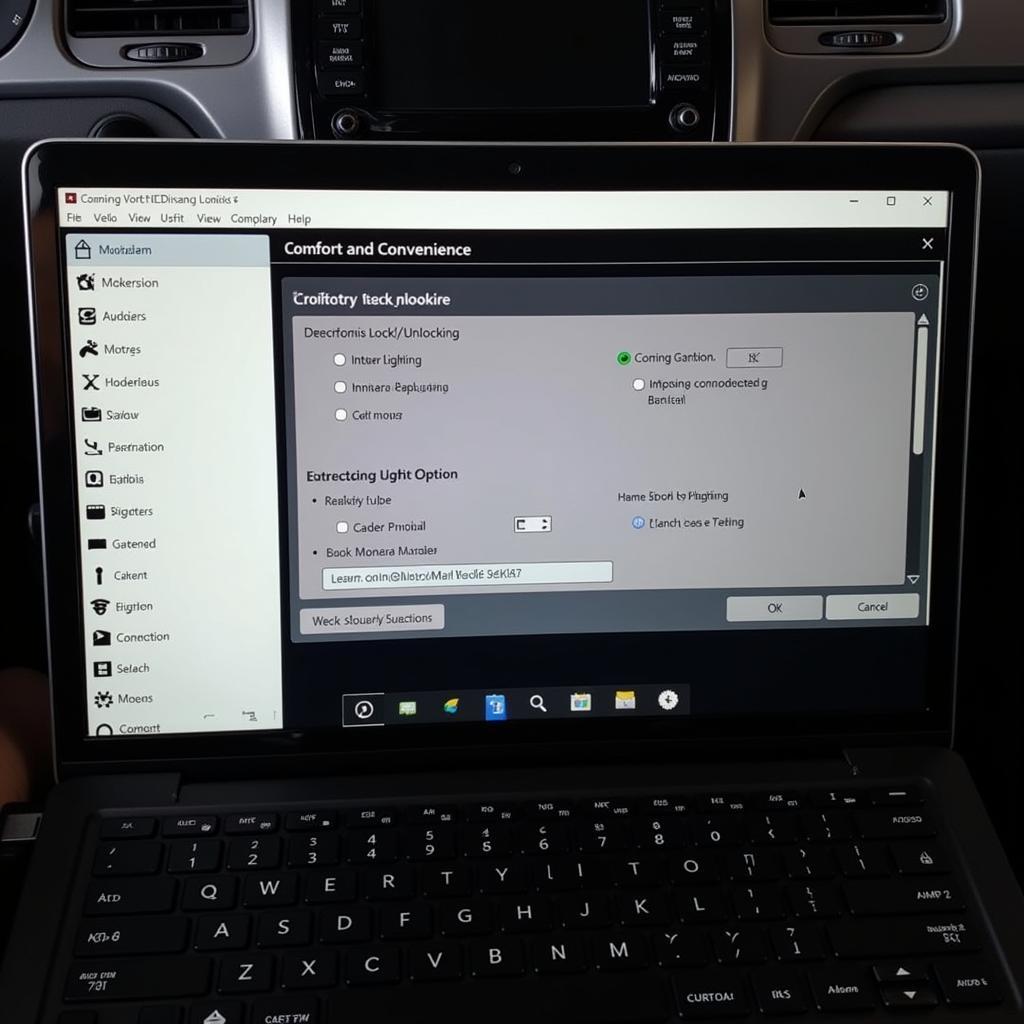The VCDS software, developed by Ross-Tech, has become an indispensable tool for automotive enthusiasts and professionals alike. One of its most powerful features lies in the ability to access and interpret Advanced Measuring Blocks, often referred to as “measuring blocks” or simply “blocks.” This in-depth guide delves into the intricacies of the VCDS Advanced Measuring Blocks list, empowering you to diagnose and troubleshoot your vehicle with precision.
What is the VCDS Advanced Measuring Blocks List?
Imagine being able to peer into the “brain” of your car and observe the intricate dance of sensors, actuators, and electronic control units (ECUs). That’s essentially what the VCDS Advanced Measuring Blocks List allows you to do.
In essence, it’s a treasure trove of real-time data points from various vehicle systems. These data points, presented as numerical values, offer invaluable insights into the inner workings of your car. Think of it as a live stream of information about your engine, transmission, ABS, airbags, and countless other modules.
Why is the Measuring Blocks List Important?
For the average car owner, the “check engine” light can be a source of anxiety and confusion. The VCDS Advanced Measuring Blocks List takes the guesswork out of diagnosis.
Here’s how it helps:
- Pinpoint Problems: Instead of relying solely on generic fault codes, you can analyze live data to identify the root cause of issues.
- Monitor Performance: Want to know your boost pressure, injection timing, or exhaust gas temperature? The measuring blocks provide this information and much more.
- Verify Repairs: After a repair, you can use the list to confirm that all systems are functioning within the expected parameters.
Navigating the VCDS Interface to Access Measuring Blocks
Accessing the Advanced Measuring Blocks List is straightforward with the user-friendly VCDS software. Here’s a simplified breakdown:
- Connect and Scan: Begin by connecting your VCDS interface to your vehicle’s OBD-II port and initiating a scan.
- Select Control Module: Choose the specific control module you wish to investigate from the list of identified modules. For example, if you suspect an engine-related issue, select the Engine control module.
- Go to Advanced Functions: Within the control module’s menu, locate and select “Advanced Functions.”
- Access Measuring Blocks: Look for the option labeled “Measured Values” or “Measuring Blocks.” This will open the coveted list.
 VCDS Measuring Blocks
VCDS Measuring Blocks
Understanding and Interpreting Measuring Block Data
Navigating the list effectively requires understanding its structure and terminology. Each measuring block typically comprises:
- Block Number: A unique identifier for each data point.
- Description: A brief explanation of the parameter being measured.
- Value: The real-time measurement of the parameter.
- Units: The unit of measurement for the value (e.g., RPM, degrees Celsius, volts).
Expert Insight: “The key is knowing which blocks correspond to the systems and components you’re troubleshooting,” says automotive electronics expert, Dr. Emily Carter. “Familiarize yourself with the factory repair manuals or reliable online resources to interpret the data accurately.”
Common Use Cases for VCDS Measuring Blocks
Let’s explore some practical scenarios where the VCDS measuring blocks list proves invaluable:
1. Diagnosing Engine Misfires
Experiencing rough idling or a loss of power? Measuring blocks related to misfires, such as “Misfire Count Cylinder 1” or “Misfire Detection Cycle,” can help you isolate the problematic cylinder.
2. Investigating Sensor Faults
Suspect a faulty MAF sensor? Compare the “MAF Actual” value with the “MAF Specified” value. Significant discrepancies can indicate a sensor issue.
3. Analyzing Emissions-Related Problems
Measuring blocks related to oxygen sensors, exhaust gas recirculation (EGR), and catalytic converter temperatures are essential for diagnosing emissions-related problems.
4. Monitoring Turbocharger Performance
For turbocharged vehicles, blocks displaying “Boost Pressure Actual” and “Boost Pressure Specified” provide insights into turbocharger health and performance.
 VCDS Graph
VCDS Graph
Tips for Effective Use of VCDS Measuring Blocks
- Start with the Basics: Familiarize yourself with common measuring blocks related to your specific vehicle model.
- Consult Resources: Utilize factory repair manuals or reputable online forums for block descriptions and expected values.
- Log Data: For intermittent issues, logging data while driving can help capture valuable information. Learn more about VCDS logging in our comprehensive guide: [link to “https://cardiagtech.com/what-is-vcds-logging/“]
- Seek Expert Assistance: If you’re ever unsure about interpreting the data, don’t hesitate to seek guidance from experienced technicians or online communities.
FAQs About VCDS Measuring Blocks
Q: Can I damage my car by using VCDS Measuring Blocks?
A: No, accessing and viewing measuring blocks is a non-intrusive procedure. You’re simply observing data, not making any changes to your vehicle’s systems.
Q: Where can I find a complete list of VCDS Measuring Blocks for my car?
A: While a universal list doesn’t exist due to variations between models, factory repair manuals or online resources specific to your car brand and model are the best places to find this information.
Q: Can I use VCDS Measuring Blocks to tune my car?
A: While VCDS can provide insights into engine parameters, it’s not designed for engine tuning. For safe and effective tuning, consult with a qualified professional.
Conclusion
The VCDS Advanced Measuring Blocks list is an indispensable tool for anyone looking to understand, diagnose, and maintain their vehicle with greater depth. By mastering this feature, you unlock a new level of control and insight into your car’s inner workings. Remember to use the information wisely, consult reliable resources, and never hesitate to seek expert help when needed.
Need more guidance on using VCDS or exploring its other powerful features? Check out CARDIAGTECH’s extensive collection of resources and tutorials to further enhance your automotive diagnostic skills: [link to “https://cardiagtech.com/ross-tech-vcds-tutorial/“].

